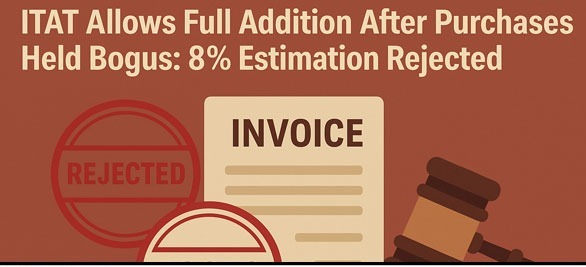1. The appellant-assessee was served with a notice u/s 143(2) of the Income Tax Act, 1961 on October 21, 2002, appearing at page 20 of the paper book, inter alia, asking him to appear before the Assessing Officer. The said notice did not, however, indicate whether the same was under (i) or (ii) as by the time the notice was issued Section 143(2) had undergone an amendment by incorporating (i) and (ii). The assessee raised his objection and contended that the notice was vague and asked the authority to issue "proper notice". The authority immediately reacted by issuing a letter dated November 12, 2002, appearing at page 27 of the paper book by clarifying that the said notice should be read as a notice u/s 143(2)(ii) . The assessee then contended that such notice was barred by limitation as the 12-month period was over by the time the second letter reached the assessee. There was correspondence exchanged between the assessee and the Assessing Officer. Ultimately, the Assessing Officer decided to proceed with the matter and asked the assessee to appear before him. The assessee then prayed for an adjournment on the ground of ill-health. Such letter of adjournment was sent on February 15, 2003. The Assessing Officer granted adjournment. When the subsequent notice came on September 9, 2003, the assessee again prayed for adjournment on the ground that his advocate became sick. On September 16, 2003, the assessee again wrote to the Assessing Officer that his advocate did not recover from his illness. By this time, the assessee already moved a writ petition before this Court and the learned judge by an order dated September 18, 2003, gave directions for filing affidavits. However, no interim order was passed by his Lordship. It is significant to note that in the writ petition the assessee totally suppressed the correspondence exchanged between the parties after January 2003. Similarly, the assessee also suppressed the fact that he had already moved this Court, before the hearing officer while writing to him seeking for an adjournment on September 16, 2003. It is significant to mention here that the writ petition was affirmed on September 5, 2003.
2. The learned judge dismissed the writ petition on two grounds:
(i) The writ petitioner suppressed material facts before his Lordship by not incorporating the subsequent events in the writ petition.
(ii) The subject proceeding could be proceeded with u/s 143(2) without considering the amendment and in case such amendment was applicable the plea of limitation was not available to the writ petitioner as the second letter issued on November 12, 2002, was a clarificatory one of the original notice dated October 21, 2002.
3. Being aggrieved by and/or dissatisfied with the judgment and order of the learned single judge the assessee preferred the instant appeal.
4. Mr. J.P. Kaithan, learned Counsel appearing for the appellant before us has contended as follows:
(i) The amendment of Section 143(2) came up in June, 2002, and was very much in force when the original notice dated October 21, 2002, was issued. Hence, the learned judge erred in holding that the old law would apply.
(ii) The original notice dated October 21, 2002, was a vague notice. This was objected to by the assessee. The assessee asked the authority to issue a "proper notice". Hence, the subsequent letter dated November 12, 2002, should be considered as an independent notice and the same was of no consequence because by this time the said notice was barred by laws of limitation.
(iii) The writ petition could not be dismissed on the ground of suppression as there was no suppression at all. According to him, the subsequent letters asking for adjournment on the ground of illness of the assessee and his advocate were not relevant to be brought in the writ petition. However, once the same was brought by the Revenue in their affidavit-in-opposition the assessee duly dealt with such allegation in the affidavit-in-reply.
5. Mr. Khaitan has lastly drawn our attention to a bunch of documents to show that there was subsequent development in the matter.
6. Mr. Dipak Kumar Shome, learned Counsel appearing the Revenue while opposing the appeal has contended before us that the suppression made by the writ petitioner was deliberate and the writ petitioner wanted to mislead this Court by such deliberate suppression. Hence, the learned judge was right in dismissing the writ petition on that ground.
7. On the question of amendment Mr. Shome has contended that mere wrong quoting of the section ipso facto did not invalidate the notice dated October 21, 2002. In any event the said notice was clarified by the subsequent letter dated November 12, 2002, which could by no stretch of imagination be termed as an independent notice. Therefore, the plea of limitation could not be taken by the assessee.
8. Mr. Shome has further contended that since the second letter was clarificatory in nature the plea of limitation was not available to the assessee and the learned judge rightly rejected so.
9. Mr. Shome on the merits has also contended that the writ petitioner did not approach the learned single judge with clean hands. He initially objected to the notice on the plea that the amended provision was not mentioned. Such clarification was subsequently made. The assessee waived his objection by dealing with the issue on the merits and by submitting his objection as well as by asking for adjournment before the hearing officer on the ground of illness. In this regard the reference may be had to the letter dated February 15, 2003, wherein it would appear that the assessee himself wrote to the officer that he was arranging the documents in terms of the notice.
10. We have considered the rival contentions of the parties. We have also perused the bunch of documents handed over in court by Mr. Khaitan which are kept on record. On a perusal of the documents it appears that during the pendency of this writ proceeding and the appeal before this Court the Commissioner of Income Tax (Appeals) was approached by the assessee. Before the Commissioner a plea was taken that the original notice was bad as it was not served under the amended law. The Commissioner (Appeals) rejected such ground by observing that since the mistake, if any, in the notice was "curable" mistake u/s 292B of the said Act of 1961 the subsequent letter cured the mistake and the plea of limitation was not available to the assessee.
11. The appeal was preferred before the Tribunal. Grounds Nos. 2, 3 and 4 of the appeals before the Tribunal are set out below:
2. For that the learned Commissioner of Income Tax (Appeals) was not justified to hold that proper notice u/s 143(2) was served within 12 months as stipulated in the Act.
3. For that the notice u/s 143(2) cannot be treated as notice u/s 143(2)(ii).
4. For that the defect is not curable u/s 292B as opined by the learned Commissioner of Income Tax (Appeals).
12. The Tribunal decided the appeal on the merits. On a perusal of the judgment and order of the Tribunal it appears that the grounds Nos. 2, 3 and 4 were not specifically dealt with.
13. A miscellaneous application was filed before the Tribunal where the following plea was taken:
That apart, it appears that your honours had a feeling as in the assessment year 1995-96 the hon''ble Tribunal had set aside the assessment for further hearing in this assessment year 2001-2002 also. But this is not the fact. The appeal in this year is against original order. Right from the beginning the issue of notice u/s 143(2) without mentioning the clause had been disputed. The issue had also been raised in the grounds before your honours. The issue had not been adjudicated. Of course it would be fair to mention that the hon''ble Calcutta High Court had decided the issue against your appellant but the issue is pending before the Division Bench in appeal. It would be improper not to press this ground before your honours and agitate before the hon''ble High Court. However, your honours can decide the issue as your honours please.
14. Ultimately in the said application the assessee prayed for recall of the order of the Tribunal for fresh adjudication.
15. In the backdrop of the subsequent development so referred to above, let us now decide the instant appeal on the merits.
16. We have considered the submissions of the parties. We have also perused the judgment and order passed by the learned single judge impugned in this appeal.
17. We are of the view that the learned judge could have stopped after observing that the writ petitioner made deliberate suppression and the writ petition could have been dismissed on the said ground alone. We have perused the reasoning given by his Lordship on that score and we are in full agreement with his Lordship. We also supplement by saying that the writ petitioner not only misled the learned single judge but also misled the hearing officer by making the subsequent application for adjournment without disclosing the fact that he had already approached this Court.
18. On the legal issue the learned judge held that the old law would be applicable. This possibly was not the case of either of the parties and it is apparent on a perusal of the records of the subsequent proceedings referred to above. Hence, the learned judge perhaps was not correct to observe as such. We, however, are in total agreement with his Lordship that since the original notice dated October 21, 2002, was clarified subsequently by the letter dated November 12, 2002, the plea of limitation was not available to the assessee.
19. The application made by the assessee before the Tribunal is pending. It is true that on grounds Nos. 2, 3 and 4 there was no specific discussion by the Tribunal. The Tribunal may dispose of the said application to the extent that whether such defect was a "curable defect" or not. In this regard we may refer to ground No. 4 quoted (supra).
20. Mr. Khaitan, however, has contended that in case the Tribunal ultimately comes to a finding that such mistake was an incurable one by accepting ground No. 4 quoted (supra) the assessee must be allowed to raise the plea of limitation. We have already held that the learned judge was right in observing that the second letter was a clarificatory one and the plea of limitation was not available on that score. We only make it clear that such observation of the learned single judge so affirmed by us would not debar the Tribunal to decide the issue independently as we have not considered Section 292B as referred to by the Commissioner (Appeals) while deciding the issue and leave it open to be decided in the pending application before the Tribunal.
21. With these observations, the appeal is disposed of accordingly without any order as to costs.
22. Urgent xerox certified copy of this order, if applied for, be supplied to the parties subject to compliance with all requisite formalities.

